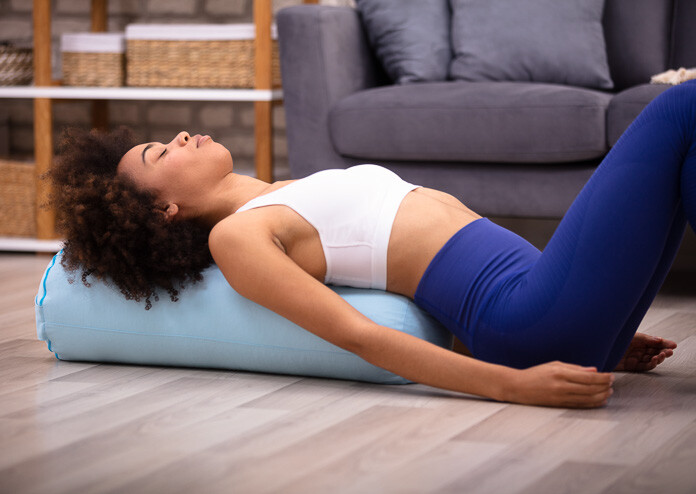5 Hidden Health Benefits of Restorative Yoga

Last Updated: June 23, 2023
Deciding on a type of Yoga for your health goals and medical conditions is confusing. You are here likely because you are wondering what the many health benefits of restorative Yoga are.
What is Restorative Yoga?
t is a gentle type of Yoga that uses props such as cushions, bolsters, and blankets so people with different medical conditions and varying movement abilities can practice yoga. Restorative Yoga allows the body and mind to completely relax.
Therefore it enables the participant to create space and get in touch with their natural qualities of compassion and understanding of others and self.
What are the Health Benefits of Restorative Yoga?
There are several health benefits to Restorative Yoga for people with chronic pain and limited mobility. In this article, we briefly explore the top five reasons to try this type of gentle, supported Yoga.
1. Yoga Provides Recovery Time and Space
Life gets even more hectic when the temperature drops and days get shorter. While an active life can help you to maintain and gain strength and confidence, an essential component of growth is recovery time. A 60 - 90 mins restorative yoga session provides the space and time for physical and mental recovery. Recovery involves relaxing muscles, lowering your heart rate, and allowing your nervous system to calm down.
2. Decreases Cortisol Levels - A Stress Hormone
Restorative yoga has been shown to decrease cortisol levels which are associated with high blood pressure, weight gain, and heart disease. Restorative yoga teaches conscious relaxation of the body and mind, therefore decreasing stress and cortisol level.
3. Get Better Sleep with Restorative Yoga
Restorative yoga releases tense muscles relieves joint aches, and helps the mind to transition from stress to calm. Sleep is crucial to essential physiological repair and memory. Sleep enables us to create space for new memories, emotions, and energy.
Also, it has been shown that sleep deprivation affects sports performance. Inadequate sleep can result in hormonal changes. Some research shows that sleep deprivation can increase the level of cortisol and decrease the activity of human growth hormones and reduction in glycogen synthesis.
Lastly, a few studies have declared that regular restorative Yoga helps breast cancer patients relax, fatigue less, and sleep better.
4. Restorative Yoga Balances the Nervous System
Your nervous system is balanced when your body is fully relaxed. The restorative yoga sequence places your body in a relaxed state that allows your nervous system to stop constantly being in the sympathetic state, fight or flight (always on the go and reactionary). Tap into the parasympathetic nervous system (PNS) to aid healing and relaxation. Something we could always use more of in this busy high-demand world we now live in.
Our PNS system is the one that engages the vagus nerve. Doing this regularly with breath and Yoga enables us to relax, be calm and reduce chronic pain symptoms.
I tell people that in some ways, this is the hardest class you’re going to take. When you’re still, it’s hard to shut off your mind, and that’s where the real work is. That’s also where you might find the greatest capacity for growth, deep relaxation, and true well-being. Gail Grossman, Restorative Yoga for Life
5. Yoga Enhances Strength and Flexibility
"The beauty of restorative Yoga is that there is no muscular contraction involved. We believe we have to “work” to increase flexibility, but often we achieve more opening in parts of the body that we perceive as tight by softening and relaxing than through active asana practice. During a restorative Yoga sequence, you still stretch but you relax fully in the stretch so that tension can slowly be released." Ekhart Yoga
Restorative #yoga still stretches, but you relax fully so tension can slowly
releases." Ekhart YogaYoga can also be used on the body after an injury. We have had clients whose primary form exercise was Yoga. Their challenge was that their practice was increasing their pain, so we developed a Yoga based active rehab program. During each session, we coached them to get the most out of the poses without pain.






